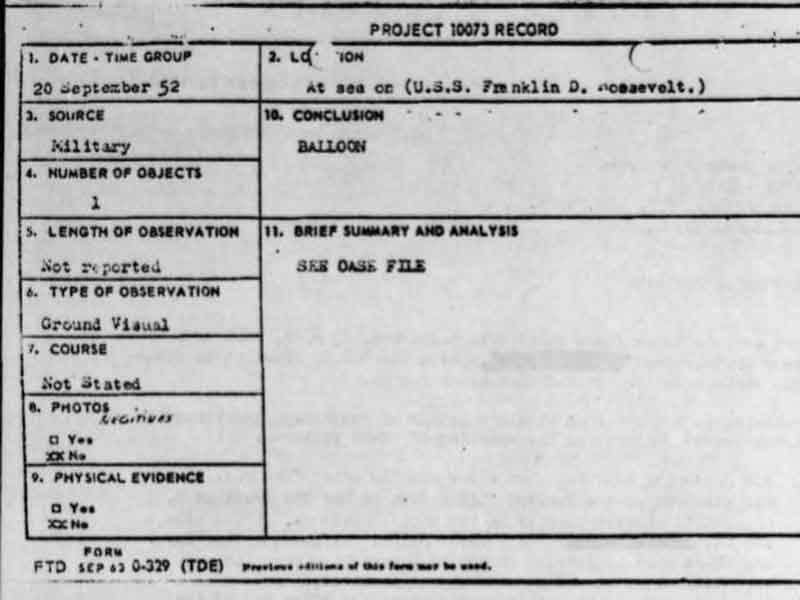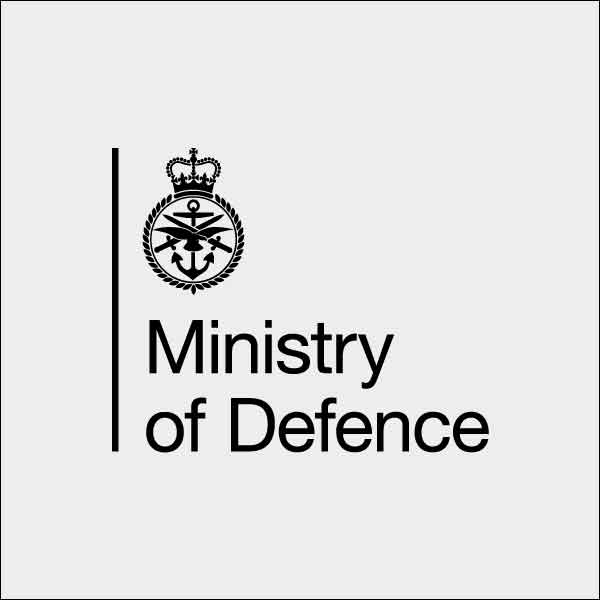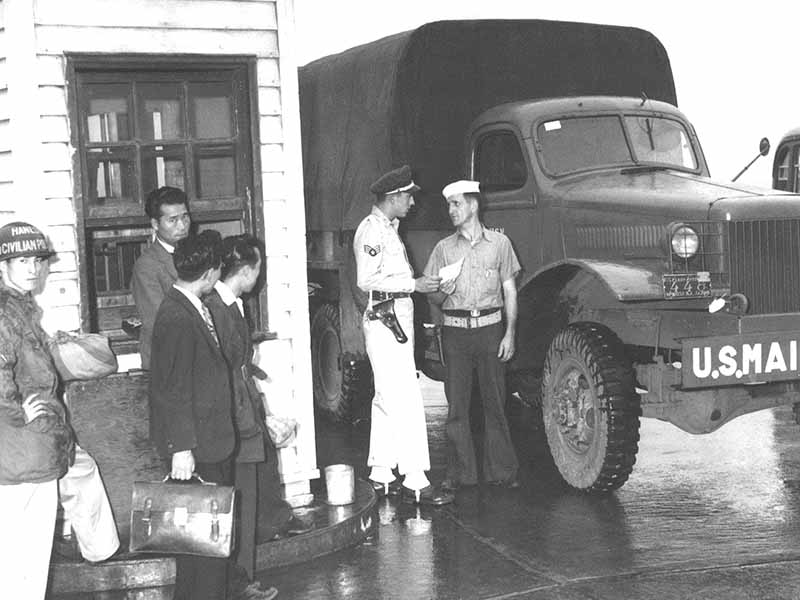Exercise Mainbrace Sightings

From September 13-21, 1952, several unidentified aerial objects were reported by military personnel in different locations across Northern Europe and the North Sea. Many of these reports came from participants in Operation Mainbrace, a joint NATO military exercise. The Royal Air Force sightings grabbed headlines in the United Kingdom.
In the fall of 1952, NATO staged a series of military exercises from the Arctic Circle to the Mediterranean Sea. Operation Mainbrace (also known as Exercise Mainbrace) was one such large-scale exercise that took place from September 14-25, 1952, with the intention of demonstrating to Denmark and Norway that they could be effectively protected from attack by the Soviet Union. It included the navies of nine countries, including the United States, UK, Canada, France, Denmark, Norway, Portugal, Netherlands, and Belgium, and took place in the Norwegian Sea, the Barents Sea, the North Sea, and the Baltic Sea. 80,000 men, over 200 ships, and 1,000 aircraft took part in this exercise over twelve days.
Starting on September 13, 1952, numerous unidentified aerial objects were reported by military personnel from different countries, in different locations across Northern Europe.
First Reported Sighting
The first report came from crew members on the P521 Willemoes (1943), a Najaden-class torpedo boat in the Danish naval fleet, on the night of September 13th, while operating just North of Bornholm Island in the Baltic Sea. Lieutenant Commander Schmidt Jensen and crew members reported seeing "a luminous triangular object flying across the night sky at an estimated 1,500 kilometers an hour."
Second Reported Sighting
The second sighting occurred just before 11am.. on Friday, September 19, 1952 in North Yorkshire, England, when Lieutenant John W. Kilburn and at least four other aircrew personnel on the ground observed a Gloster Meteor (plane) approach the RAF Topcliffe airbase from the East. The aircrew "suddenly noticed a white object in the sky at a height between ten and twenty thousand feet some five miles astern of the Meteor.""The object was silver in color and circular in shape, it appeared to be traveling at a much slower speed than the Meteor, but was on a similar course. It maintained the slow forward speed for a few seconds before commencing to descend, swinging in a pendular motion during descent, similar to a falling sycamore leaf. This was at first thought to be a parachute or engine cowling. The Meteor, meanwhile, turned towards [unreadable] and the object, while continuing its descent, appeared to follow suit."
"After a further few seconds, the object stopped its pendulous motion and its descent, and began to rotate about its own axis. Suddenly, it accelerated at an incredible speed towards the west, turning onto a south-easterly heading before disappearing."
"All of this occurred in a matter of fifteen to twenty seconds. The acceleration was in excess of that of a shooting star. I have never seen such a phenomenon before. The movements of the object were not identifiable with anything I have seen in the air and the rate of acceleration was unbelievable." This incident was documented in a front page headline in the September 20, 1952 edition of the Yorkshire Evening Press.
Third Reported Sighting
On September 20th, shortly after 4 PM, multiple crew members of the USS Franklin D. Roosevelt observed a "silvery, spherical object that moved across the sky." Wallace Litwin, a reporter who was present on the USS Roosevelt, took a "number of 2 1/4 x 2 1/4 color photographs from the flight deck on the Carrier FDR."In a letter written more than two decades later, Litwin described what he witnessed as "a white sphere directly overhead and quite high up against a bright blue sky." After taking "three or four shots", Litwin describes going below deck to the officers' lounge, where "I jokingly announced to the correspondents there that I had 'shot a flying saucer'". The ship's executive officer asked me what I meant, and I explained that I had just photographed today's weather balloon. He said that our ship had not sent one up on that day, checked to be sure, and then radioed to the Midway. They said that they had not yet sent up the balloons for that day and that there were no unaccounted-for balloons around from previous days."
Litwin, in the same letter, claims that he sent his film back to New York, and that his editor was contacted by the U.S. Army at "Wright Field" and told "they had to see it first." He then states that his editor subsequently traveled to Wright Field and saw giant prints made from his transparencies, and that they were "tacked to the walls of a huge room." One of the transparencies was returned to his editor two years later, and ultimately returned to Litwin.
At the end of his letter, Litwin also suggests that the USS Roosevelt was secretly carrying an atom bomb "in a small room far below decks, and constantly guarded by a U.S. Marine guard. The Navy denied this most vehemently, but we reporters plied some of the Navy people with charm, money and booze, and made sure of the fact. Perhaps it relates to the white sphere?"
Fourth Reported Sighting
Also on September 20, 1952, at approximately 7:30 PM at Air Base Karup, Denmark, three Danish Air Force officers observed an unidentified object that they described as a shiny metallic disc. They claim that it passed overhead and disappeared into clouds in the East.
Fifth Reported Sighting
On September 21, 1952, six Royal Air Force Avro Shackeltons (a long range marine air patrol aircraft) reported spotting a spherical object over the North Sea. The object avoided initial pursuit and disappeared. Members of this formation of jets claimed that the object followed one of the Shackletons as it returned to base. The pilot turned to pursue the object, and it evaded the plane and raced away.




































